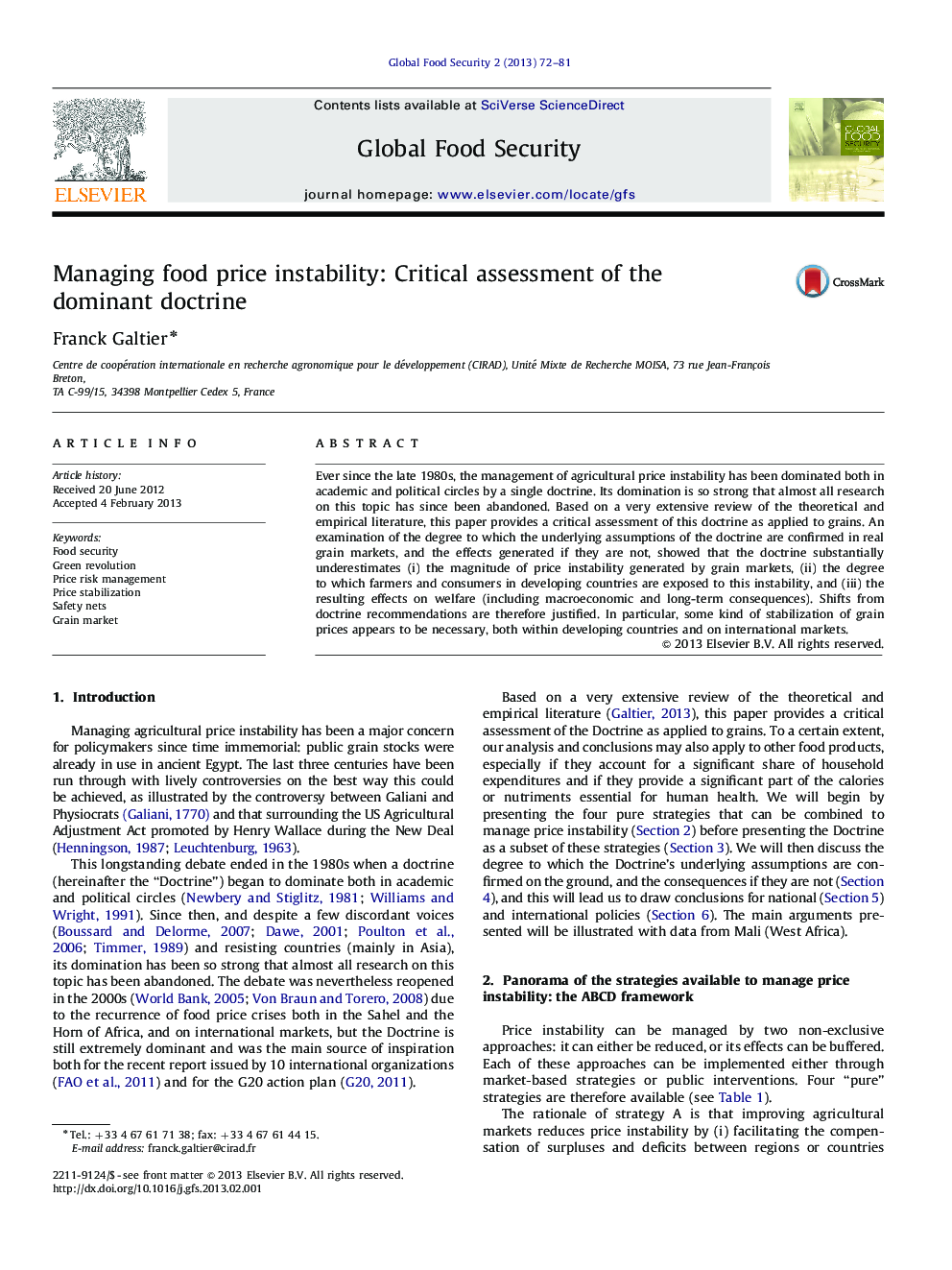| Article ID | Journal | Published Year | Pages | File Type |
|---|---|---|---|---|
| 1047603 | Global Food Security | 2013 | 10 Pages |
Ever since the late 1980s, the management of agricultural price instability has been dominated both in academic and political circles by a single doctrine. Its domination is so strong that almost all research on this topic has since been abandoned. Based on a very extensive review of the theoretical and empirical literature, this paper provides a critical assessment of this doctrine as applied to grains. An examination of the degree to which the underlying assumptions of the doctrine are confirmed in real grain markets, and the effects generated if they are not, showed that the doctrine substantially underestimates (i) the magnitude of price instability generated by grain markets, (ii) the degree to which farmers and consumers in developing countries are exposed to this instability, and (iii) the resulting effects on welfare (including macroeconomic and long-term consequences). Shifts from doctrine recommendations are therefore justified. In particular, some kind of stabilization of grain prices appears to be necessary, both within developing countries and on international markets.
► We assessed the dominant doctrine on managing food price instability. ► The doctrine overestimates the ability of grain markets to stabilize prices. ► It underestimates DC farmer and consumer exposure to grain price instability. ► It underestimates the welfare effects of this exposure. ► Stabilizing grain prices in DCs is welfare-improving.
